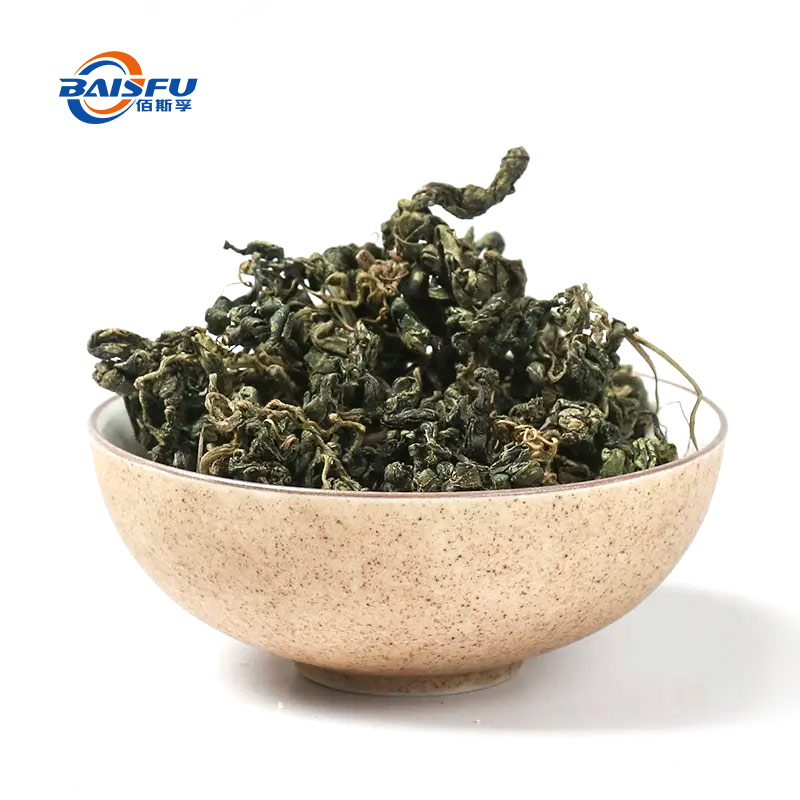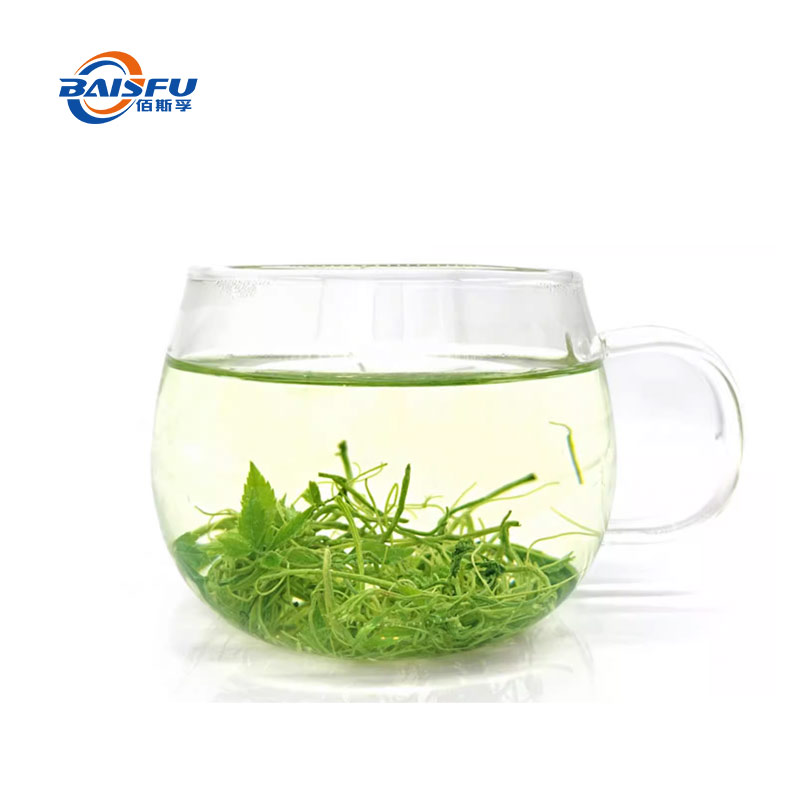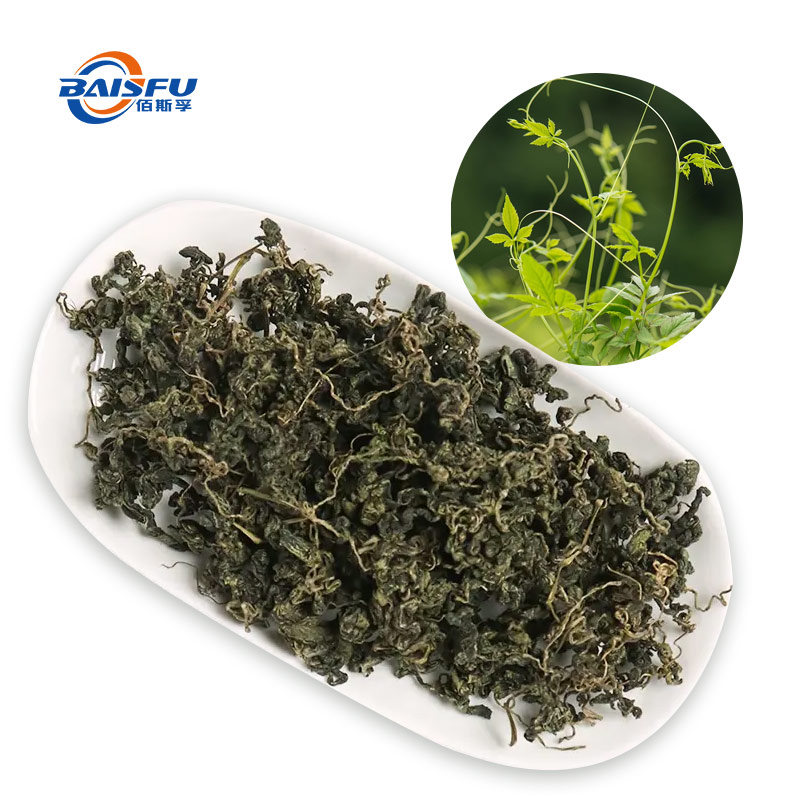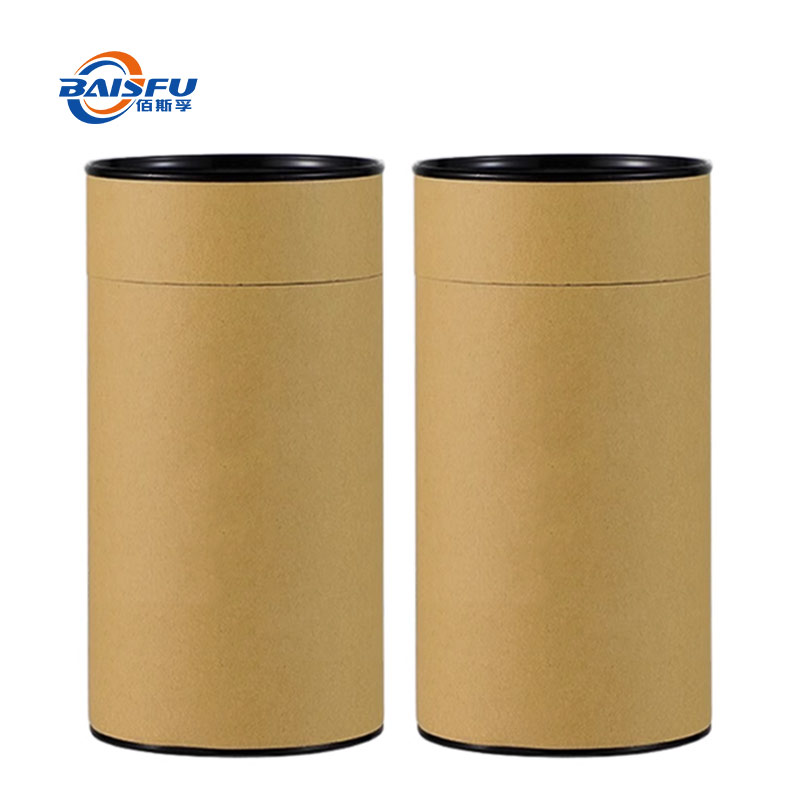Product Name :Gynostemma Tea
MOQ :1kg
Shelf life :3 Years
Brand:BAISFU
Kinds :Natural organic extract health care
Origin :Xi'an Shaanxi (China Mainland)
Certification :SC/KOSHER/HALAL
Package :1KG/5KG/10KG/25KG/180KG/200KG

Gynostemma pentaphyllum tea is an ancient Chinese herbal medicine and commonly consumed tea. It is made by picking the tender leaves and buds of Gynostemma pentaphyllum, and combining modern Chinese medicine processing technology with ancient tea frying techniques to produce Gynostemma pentaphyllum tea. The tea soup is emerald green, with a slight fragrance and bitterness, and returns to the throat with a sweet taste.
The Gynostemma pentaphyllum growing in the field is very similar to the Plum Blossom (grape family) in terms of plant morphology. Fresh Gynostemma pentaphyllum is a perennial herbaceous vine with slender stems, 1-3 meters long, and a cross-section of pentagonal or polygonal shape. Its tendrils are borne in the leaf axils, and the leaves are dark green in color. The leaves are compound, with 5-7 elliptical leaflets and small petioles. The leaves are wrinkled and easily broken, with serrated edges. The panicles are 8-20 centimeters long, and the fruit ball shaped flowers have a diameter of 5-6 centimeters. When mature, they are black with a slight fragrance and bitterness.
pharmacology.

Gynostemma pentaphyllum mainly contains saponins, polysaccharides, flavonoids, amino acids, plant proteins, alcohol, pigments, organic acids, cellulose, chlorophyll, trace elements and other substances. The first three are the main health benefits.
Saponin is the most important health ingredient in Gynostemma pentaphyllum. Since 1976, Chinese and Japanese scientists have isolated and identified over 100 types of saponins from Gynostemma pentaphyllum. Among them, 8 types of Gynostemma pentaphyllum saponins are identical to the original ginsenosides Rb1, Rc, Rb3, Rd, F2, Rg3, malonyl Rb1 saponins, and malonyl Rd saponins found in ginseng.

Daily consumption of Gynostemma pentaphyllum can be done by brewing tea separately, but it should be noted that Gynostemma pentaphyllum has sweet and bitter taste. When used for tonifying, it is advisable to choose seven leaf or nine leaf flavored Gynostemma pentaphyllum, because this type of Gynostemma pentaphyllum has high saponin content. When used for lowering blood lipids, blood pressure, and blood sugar, it is advisable to choose bitter or slightly sweet Gynostemma pentaphyllum. And it is advisable to start with a small dose (3 grams each time) and gradually increase the dose to 5 grams each time.
Although Gynostemma pentaphyllum is good, it is not suitable for everyone to use. People with cold nature, spleen and stomach deficiency, and loose stools may experience adverse reactions such as nausea, vomiting, bloating, diarrhea (or constipation), dizziness, blurred vision, and tinnitus after taking Gynostemma pentaphyllum. Therefore, it is advisable to take it with caution, especially for those with a bitter taste.









